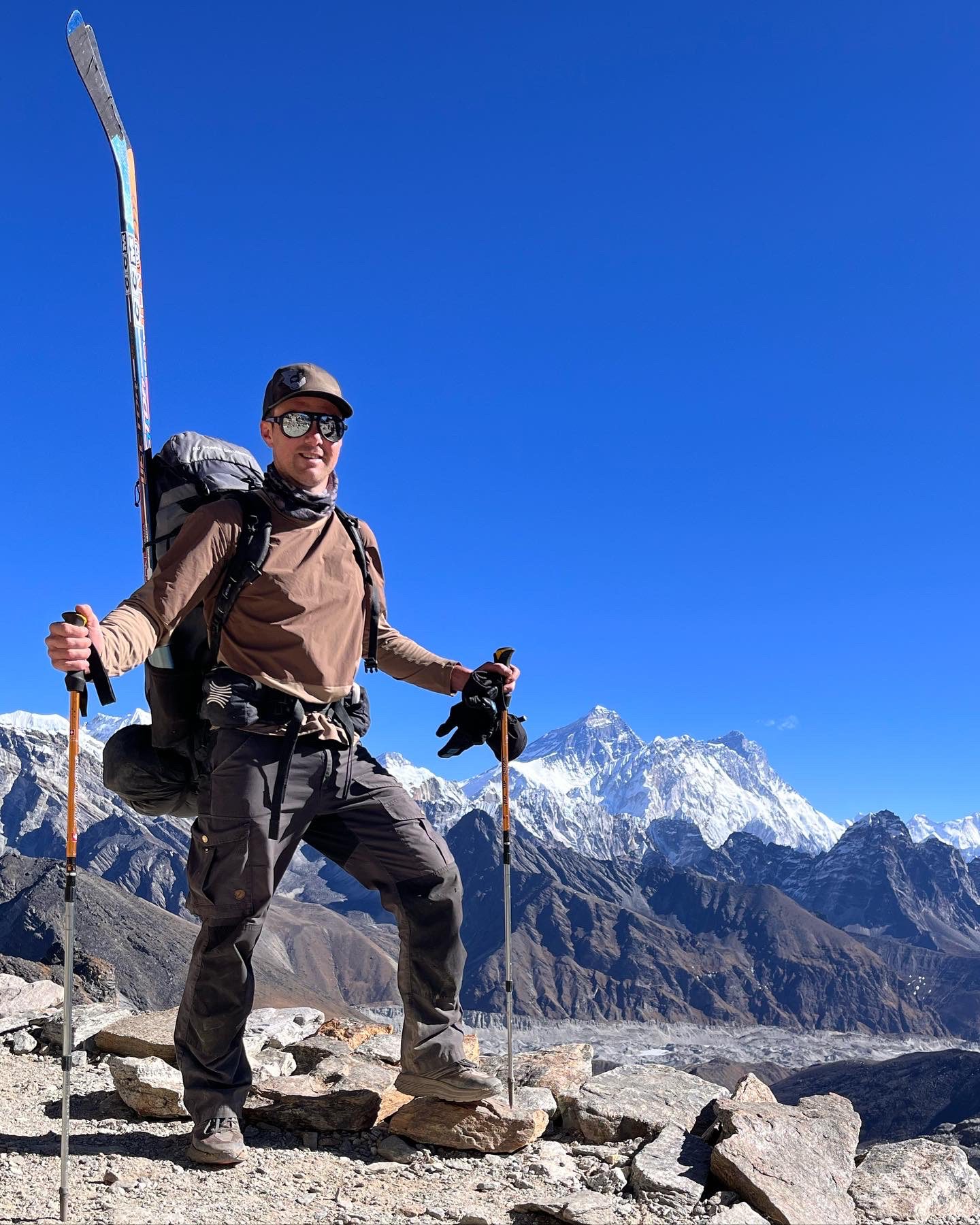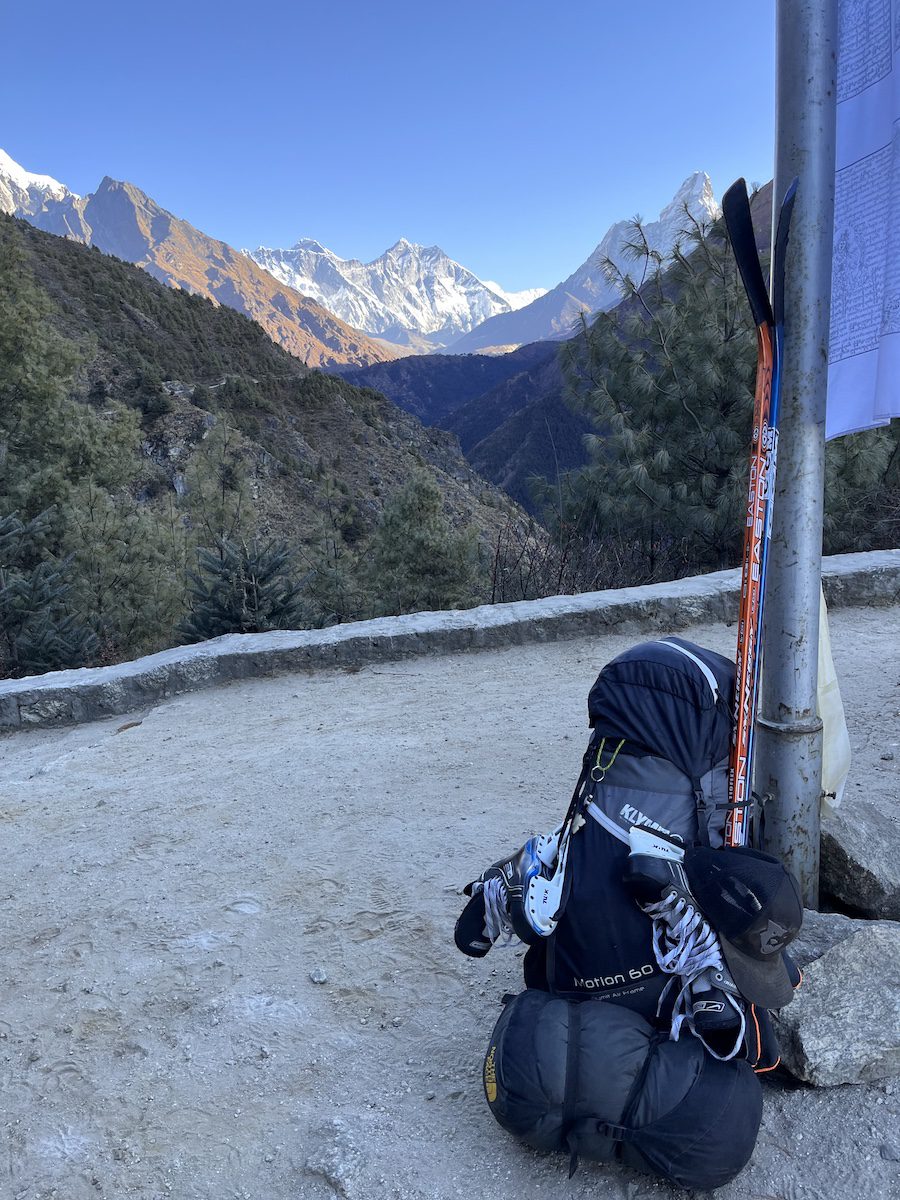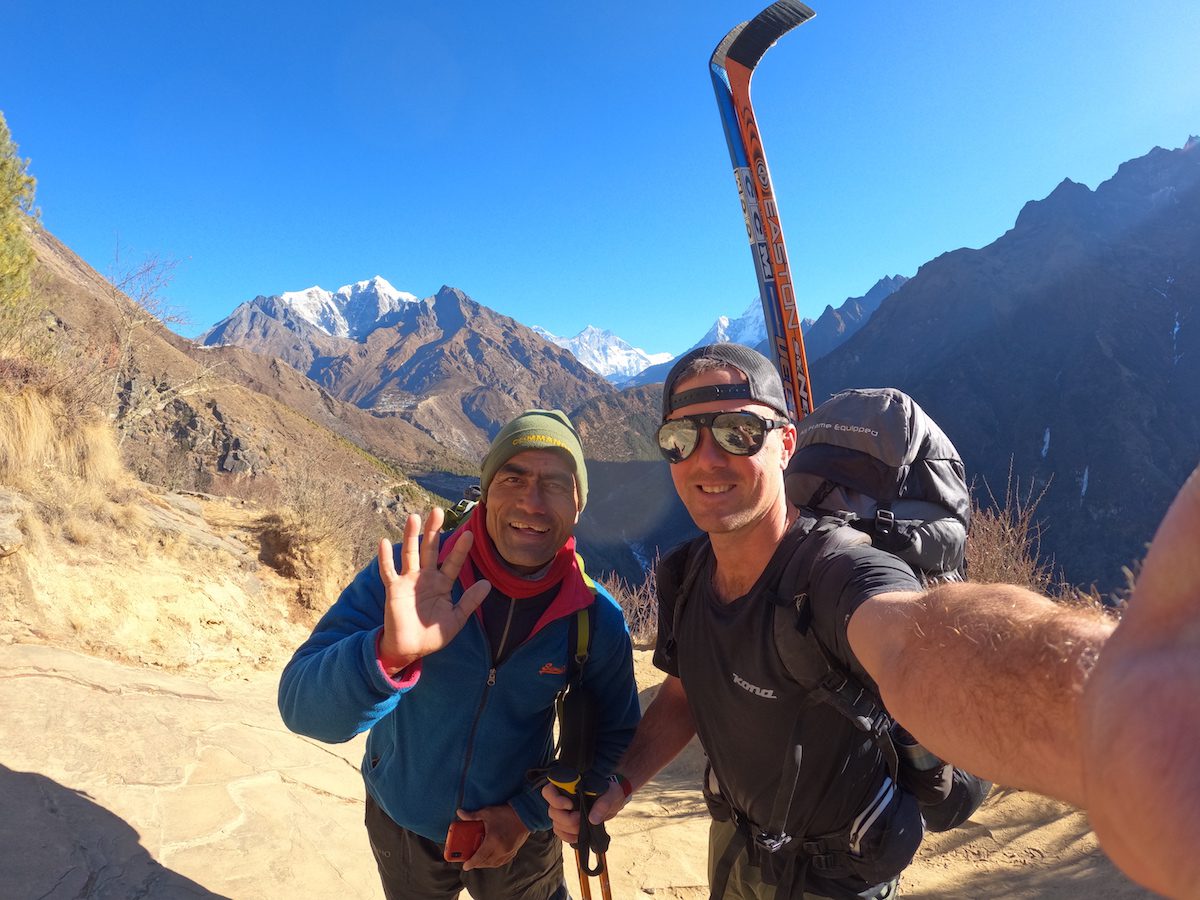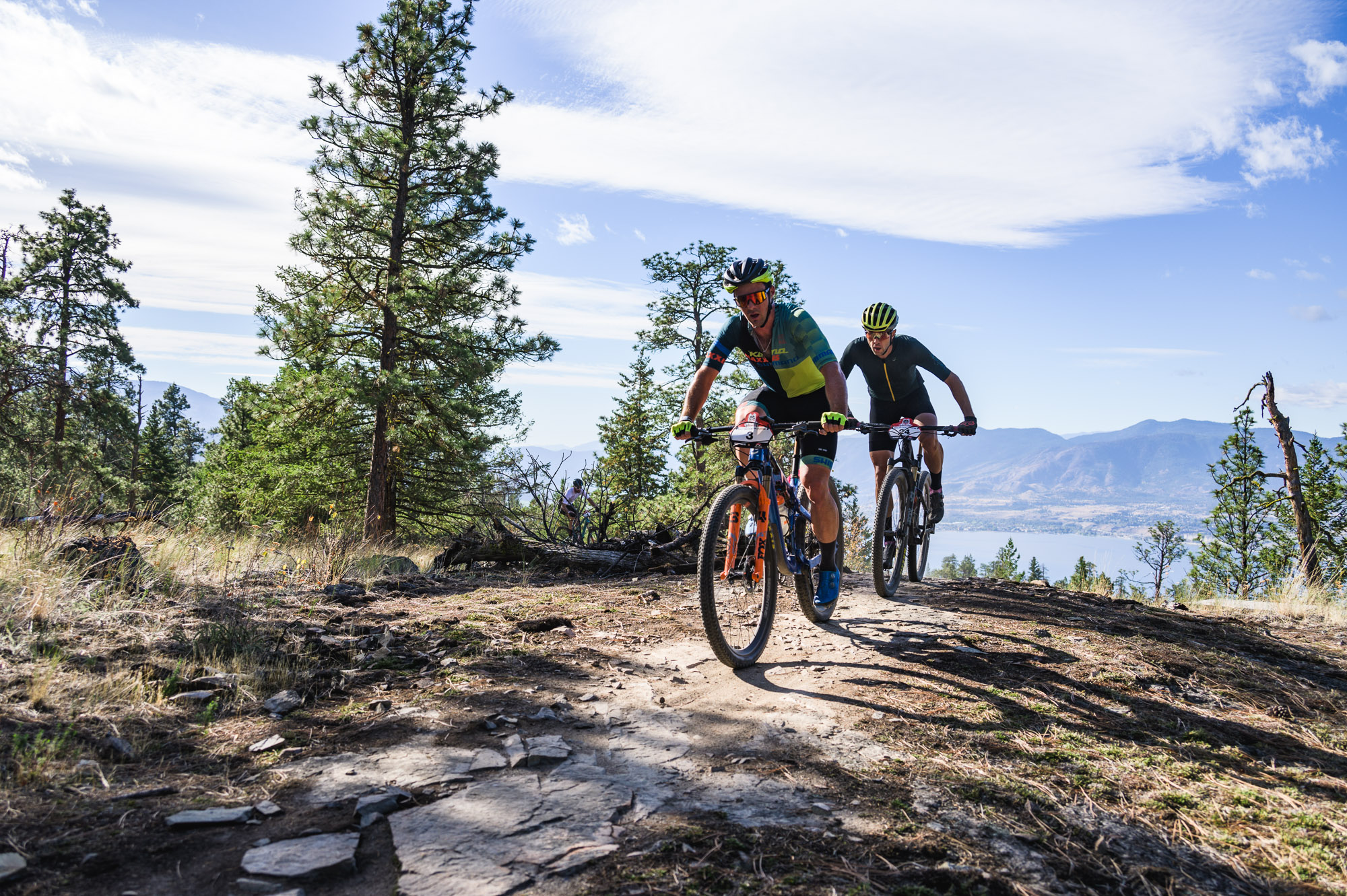Cory Wallace plays Himalayan pond hockey at 5,100m in most Canadian training camp ever
Jasper racer tries a very different take on high altitude training

Cory Wallace has a way of finding himself in the most interesting training situations. Of all his adventures, playing shinny on a frozen Himalayan lake in the rarified air at 5,100m elevation has to be one of the most Canadian moments in the history of cycling training camps.
It’s not just the highlight reel, skating on a frozen lake with Mt. Everest as a backdrop, that sets Wallace’s training camp apart. The hockey game capped off a unique cross-training program that saw him hiking through remote regions of the Himalayas for 36 days.

Cory Wallace and a high-altitude Himalayan hockey game
At a time of year when most Canadian pro cyclists are headed south to warmer climates for easy base miles – locations like Hawaii, California and Arizona that would double as very nice vacation spots – Wallace is usually in some far corner of the map, far from the creature comforts of major urban centers.
The Jasper, Alta.-raised mountain biker is clearly comfortable adapting to the unexpected, even in situations where others would be uneasy, if not very uncomfortable. The past few years have proved the Canadian’s resilience. Locked down in Nepal? Why not do an Everesting in the shadow of Mt. Everest to support a local monastery? Stuck in South Africa by sudden travel restrictions? Perfect opportunity for an FKT on Mt. Kilimanjaro and bikepacking base miles through the Serengeti.
Wallace’s latest adventure took much more planning, though. The Canadian first spotted Gokyo Lakes, and their potential for high-altitude hockey, two years ago. When he returned to Nepal this year for winter training, and another swing at the Yak Attack MTB stage race (he won), Wallace packed a stick and skates in with his bikes. A friend then sent the gear by plane from Kathmandu to meet Wallace high up in the mountains, where he carried them on his back for the final week of his 36-day trek.
“It made the pack pretty heavy. I had to hang the skates outside, same with the sticks,” Wallace recalls. It also attracted attention. “Everyone was pretty stoked. All the foreigners were pretty excited, all the Sherpa thought I was going skiing.”

Wallace put in three days on skates across a string of different lakes. After testing the ice outside the main lodge on the first day, Wallace headed even higher.
“One of the lakes was at the base of Mt. Cho Oyu, one of the 8,000m mountains,” Wallace says. “The day I left to go back to Lukla, I went over this 5,400-metre pass. I saw this perfect sheet of ice at 5,100m. It had Everest as a backdrop and a view down to Gokyo Lakes. So I unloaded my pack and played some hockey there.”
The spontaneous high-altitude shinny squeezed Wallace’s tight timeline. “I ended up hiking in the dark that night, but it was worth it.”
Spotting more lakes on the hike out already has the Canadian plotting his return.
“I left my skates and stick up at a lodge where I have some friends,” says Wallace. “I’m hoping to get a full-on game up there next winter.”

Hiking, base miles and biking
Wallace didn’t travel all the way to Gokyo Lakes just for pond hockey. The skating was a small part of a much larger plan to take a different approach to winter training. Since Wallace already covers thousands of kilometres in racing and training every year, he wanted to try switching up his off-season to keep riding fresh for the race season. After a previous attempt at a hiking camp was cut short in 2020, the Canadian was keen to see the experiment out.
“I just knew from years past that going uphill is perfect conditioning. Going downhill, you just have to be careful not to hurt yourself,” Wallace says. “Nepal’s set up for that. They have tea houses everywhere and it is all at high altitude.”
The trip started with a hike up to Kanchenjunga Basecamp, continued across the Milke Dande ridge, and into the Everest region via the Mera Peak route. The trip ended up extending to 36 days.
“I was kind of planning on it snowing, then the high passes would be blocked and the trip would be over,” Wallace recalls. “But it never snowed. I was in a good rhythm, so I thought I’d just keep going.”
In contrast to some data-driven training plans out there, the Jasper racer’s plan was, in his words “pretty loose.” He’d track time and the elevation he slept at. He didn’t wear a heart rate monitor but did use an O2 sensor to monitor blood saturation. A breathing bag added a bit more specific training. A simple three days on, one day off routine was the only other structure.
“It’s a simple life. You just walk and eat and sleep,” Wallace says with a laugh.
Remote fueling means heavy packs
Aside from getting used to a slower pace of life, especially on rest days with minimal access to a phone or the internet, the biggest challenge was nutrition.
“I was always inspired by the sherpas running around the mountains,” Wallace explains, “But I saw the food they ate was not that nutritious. I thought if I trained like the sherpas and actually took iron and protein supplements, it would probably work out.”
That meant starting out carrying everything he needed for three weeks on his back and planning a re-supply.
“Even then, we were in far-off regions, so we couldn’t really find good food all the time. There were some days that our diets were pretty bleak,” Wallace says with a laugh. “Basically, the diet there is rice, beans and spinach. It’s a good base, but you definitely need to supplement it.”
Wallace learned that the hard way.
“One year I came back from the Himalayas basically anemic. You burn through your iron supply so fast up high. I was definitely slower that year. ”

Patience and balance
As Wallace’s hiking trip extended, he passed several common altitude training landmarks. The effects were immediately obvious.
“After three weeks, I was mostly acclimated to the elevation. But I’d always read that after four weeks you’ll see a big improvement,” Wallace says. “This time, I was up there for five weeks. And the improvement is… well, going over that 5,400m pass at the end felt like being at sea level. It was pretty cool. I’ve been over 5,400m quite a few times before at the Yak Attack, and every time I’ve suffered quite a bit.”
That immediate feedback makes Wallace optimistic about the season ahead, though he cautions that a proper altitude training plan doesn’t stop when you return to sea level. He needed time to get back his cycling efficiency and, especially power.
“With altitude, your cardio and lungs get built up, but you lose a bit of power. So the whole system feels strong, but the power will take a little to come back,” Wallace explains. After Nepal, he did a tour in Sri Lanka then a stint back at home in Canada to build up his wattage. Based on the early results, though, things are looking positive.
“The numbers I’m pushing already are good, especially for this point in the year, so I think it’s going to work out for a good season. I’m already planning to do it again next year and maybe even make it six weeks.”

What’s waiting for Wallace at sea level?
Wallace will test that fitness all over the globe again this year. The Kona rider’s season starts with the first Canadian Belgian Waffle Ride on Vancouver Island. Later in the year, he’ll aim to defend his WEMBO World 24-Hour championship title in Australia. Between those, he’ll do Brek Epic and BC Bike Race mountain bike stage races.
Wallace is also aiming for the Unbound XL, but he won’t be returning to his spot on the Life Time Grand Prix tour. “It’s funny, I wasn’t sure if I wanted to do it or not, but I applied anyway. I didn’t get selected, which made the decision easy,” he adds with a laugh,” but I’m actually excited not to be committed to those seven races. They’re spread out and your whole season’s based around that. I prefer to be able to do more adventure stuff. That’s what got me into the sport to start with.
He’s also planning a few FKT rides, maybe including the BC Epic 1000, and taking another run at a double Everesting.
Follow Cory Wallace on Instagram for your best shot at keeping track of where in the world the Canadian heads next.
